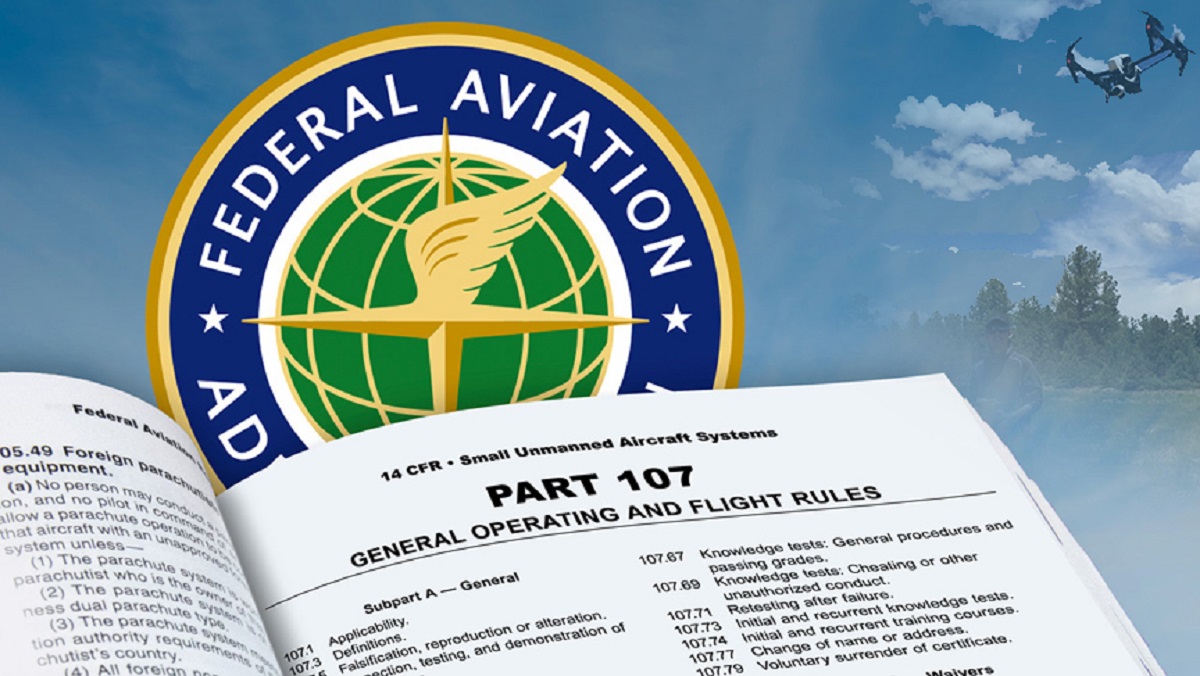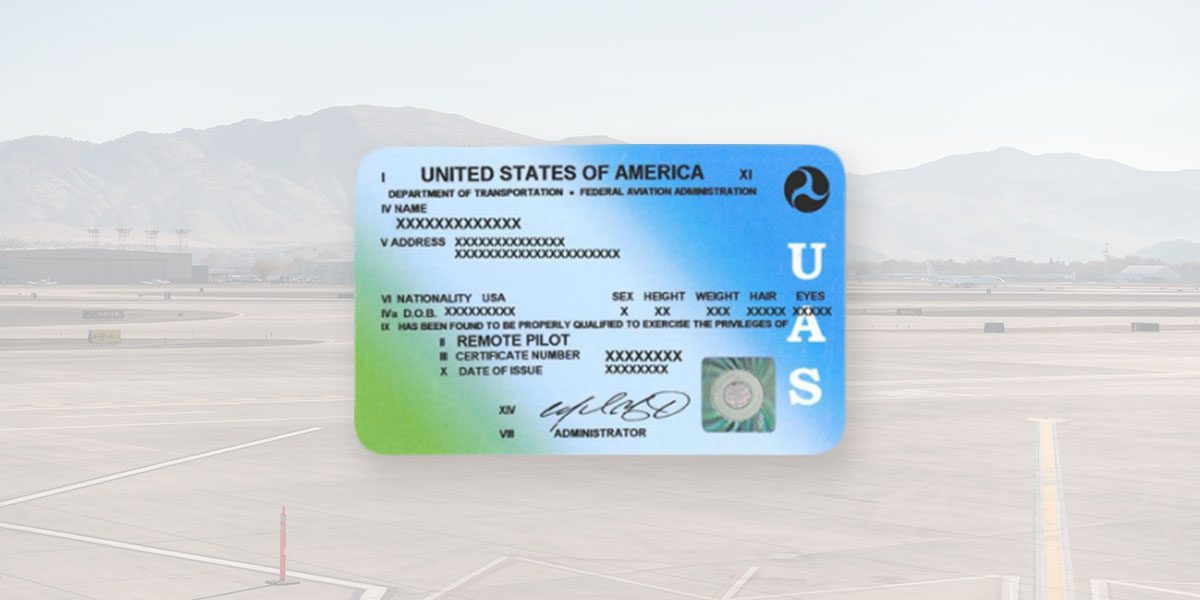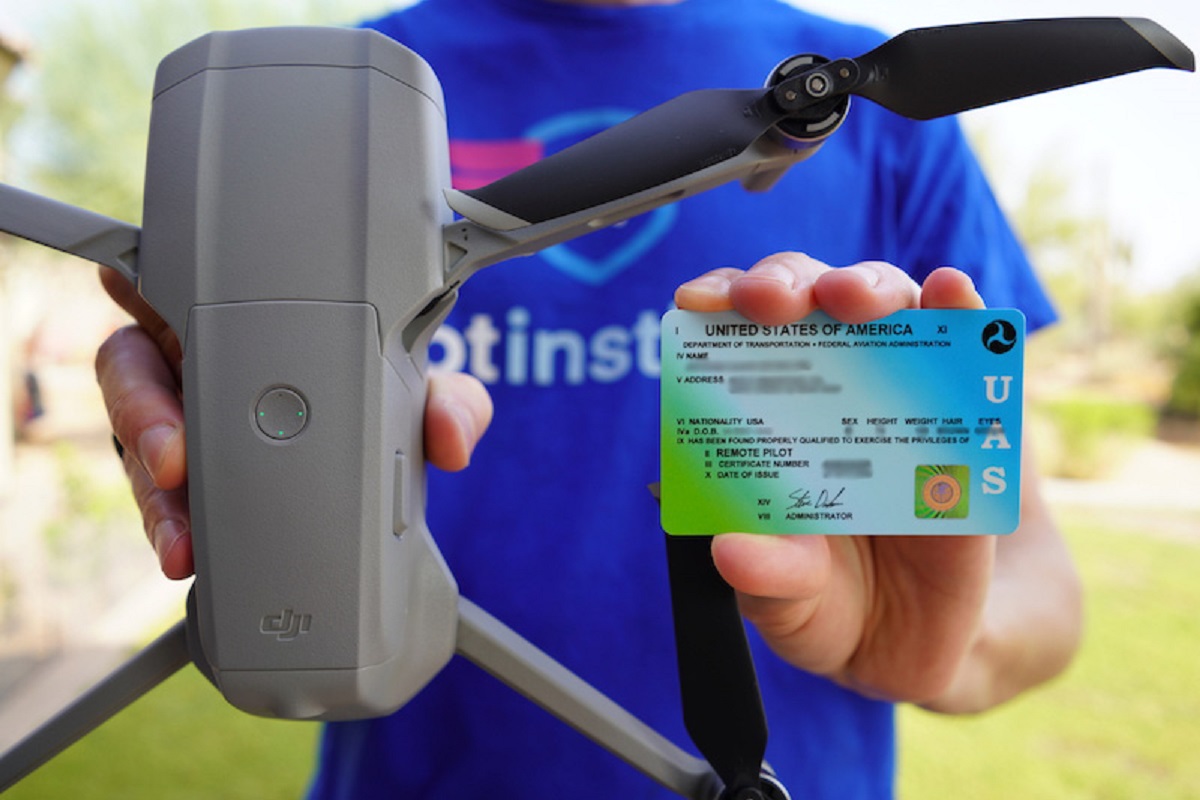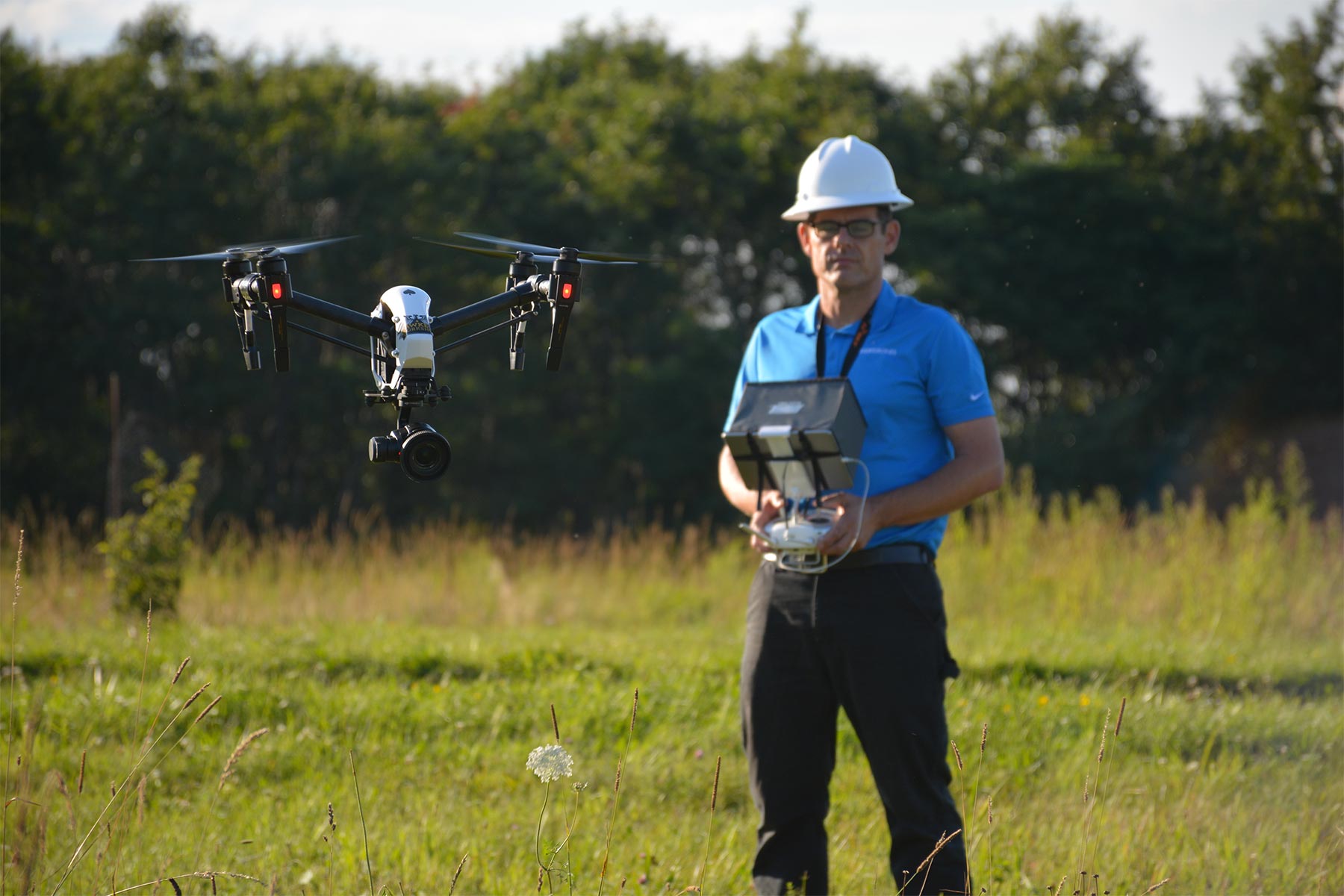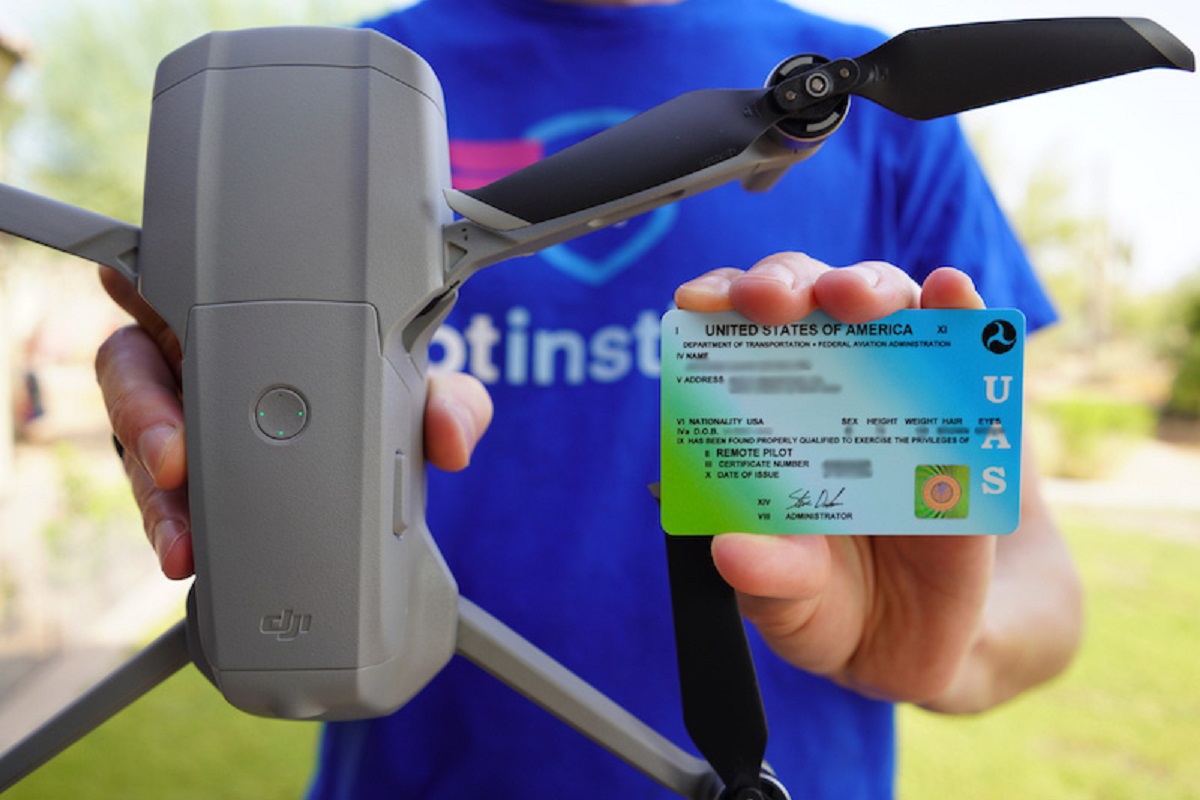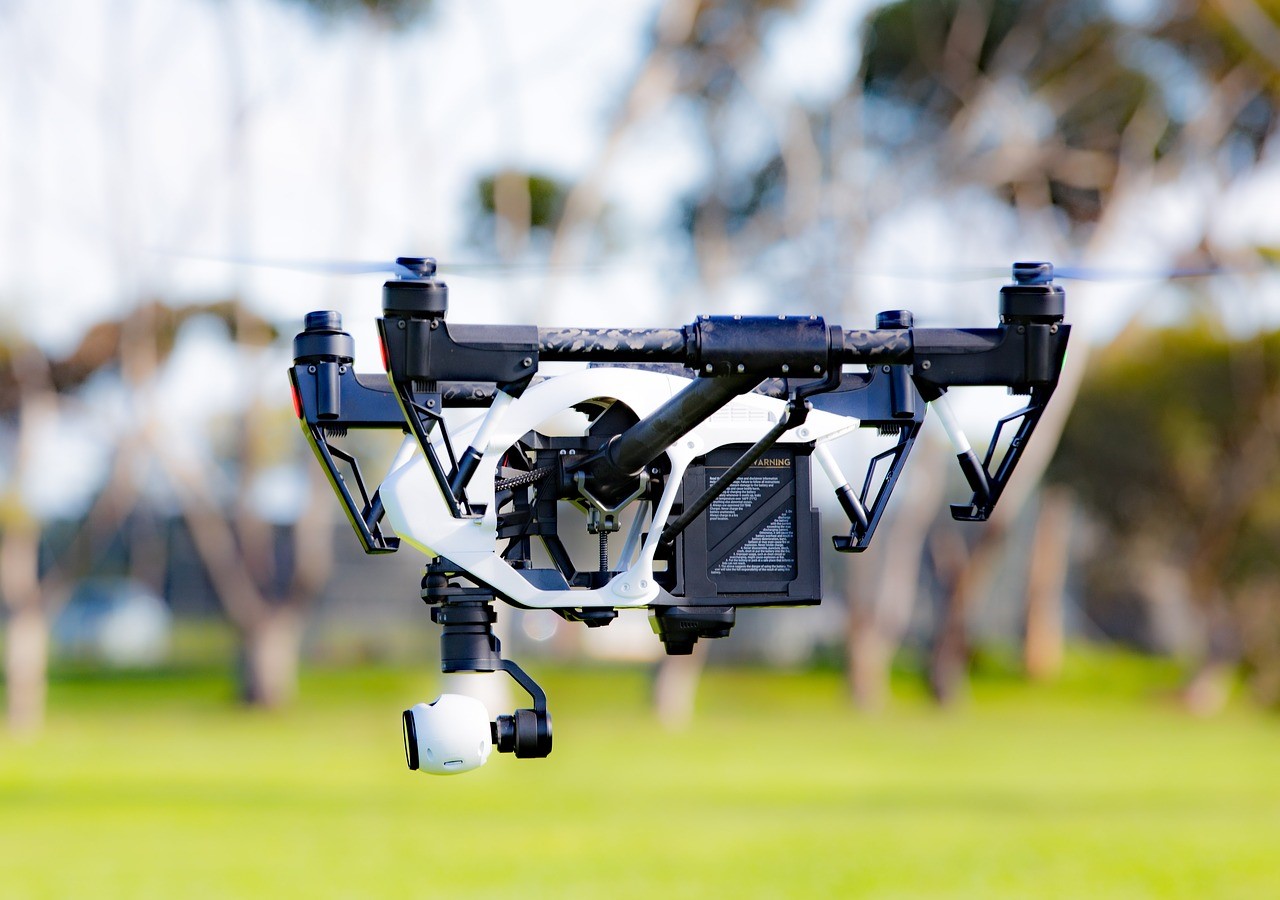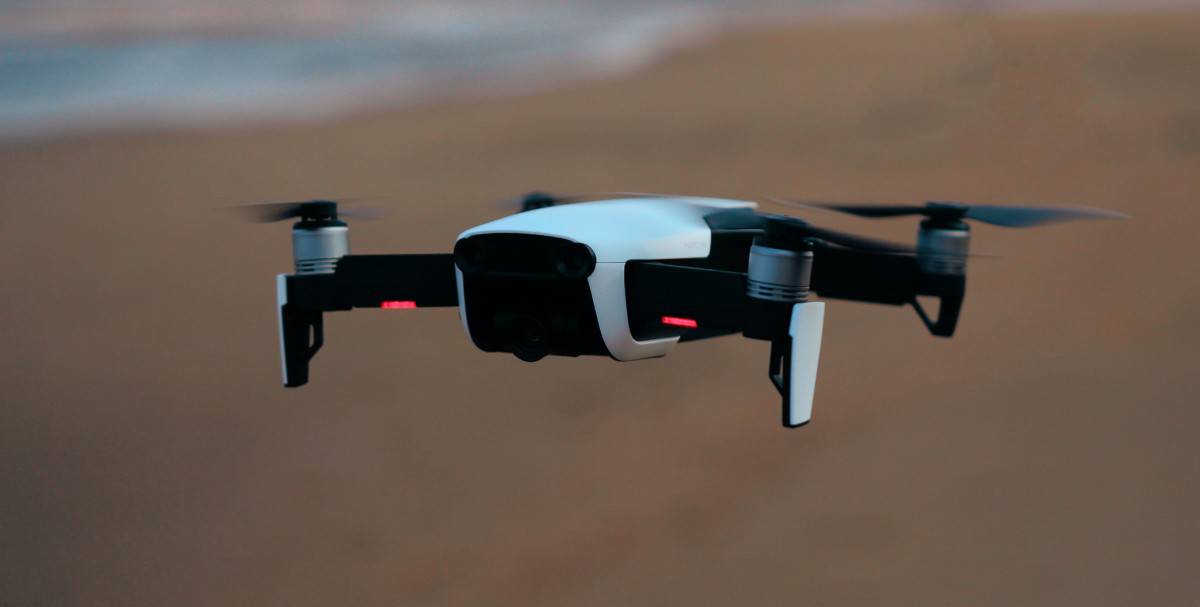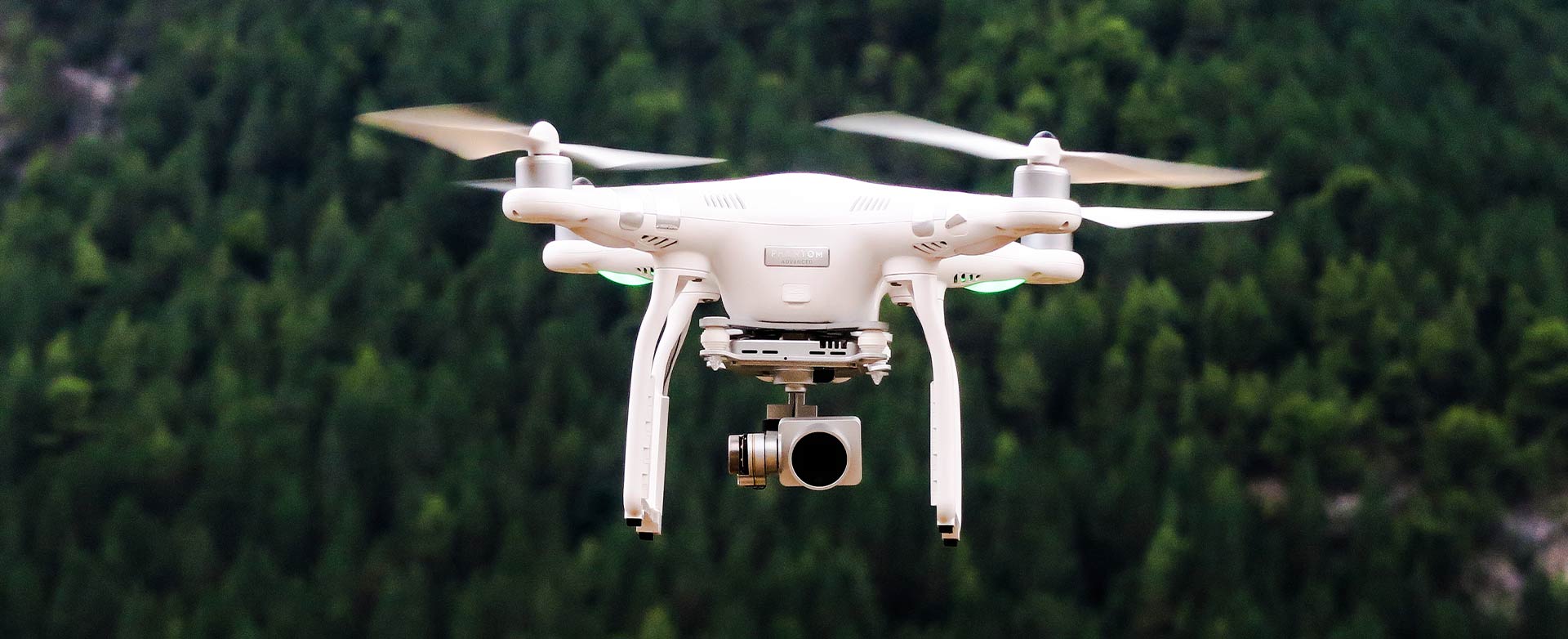Introduction
Welcome to the fascinating world of drones! Whether you’ve just bought your first drone or you’re considering becoming a professional drone pilot, understanding the requirements and regulations is crucial. One of the key steps in becoming a certified drone operator is passing the Part 107 Drone Test.
The Part 107 Drone Test, also known as the Remote Pilot Certification Exam, is administered by the Federal Aviation Administration (FAA) in the United States. This test evaluates your knowledge of drone regulations, airspace rules, weather conditions, and more. Passing this test is essential for anyone who wants to fly drones commercially, such as for aerial photography, surveying, or package delivery.
Many aspiring drone pilots wonder just how difficult the Part 107 Drone Test is. It’s natural to have concerns about the complexity of the exam and the amount of preparation required. In this article, we will explore what to expect from the Part 107 Drone Test and provide you with useful tips to help you prepare effectively.
While the thought of taking a test might seem daunting, rest assured that with the right knowledge and preparation, you can pass the Part 107 Drone Test with flying colors. This certification will open up a world of opportunities, allowing you to legally operate drones for commercial purposes and turn your passion into a profession.
So, let’s dive in and demystify the Part 107 Drone Test. By the end of this article, you’ll have a clear understanding of what the test entails and how to best prepare yourself for success.
Understanding Part 107
Before delving into the details of the Part 107 Drone Test, let’s first gain a clear understanding of what Part 107 is all about. Part 107 refers to the Federal Aviation Administration’s (FAA) set of regulations governing the operation of small unmanned aircraft systems (sUAS) for commercial purposes in the United States.
Under Part 107, commercial drone operators are required to obtain a Remote Pilot Certificate by passing the Part 107 Drone Test. This certification demonstrates your knowledge and understanding of the rules and regulations set forth by the FAA. It ensures that as a drone pilot, you have the necessary skills to operate a drone safely and responsibly.
The Part 107 regulations outline various important guidelines and restrictions that commercial drone operators need to follow. These include rules related to airspace restrictions, flight altitude limits, operational limitations, drone registration, and more. By adhering to these regulations, drone operators can contribute to the safe integration of drones into the national airspace.
It is crucial to understand that Part 107 applies specifically to commercial drone operations. If you plan to fly a drone for recreational purposes, different rules and regulations may apply. However, it is always beneficial to familiarize yourself with Part 107, as it provides valuable knowledge for safe drone operation regardless of the purpose.
As a commercial drone pilot, you are responsible for knowing and complying with Part 107 regulations. This involves understanding topics such as airspace classifications, weather conditions and their effects on drone flight, emergency procedures, and the limitations imposed by the FAA. To ensure the safety of yourself, your drone, and those around you, it is essential to have a strong foundational understanding of Part 107.
Now that you have a good grasp of what Part 107 encompasses, we can move on to exploring the specifics of the Part 107 Drone Test. This exam, designed to evaluate your knowledge of Part 107 regulations and safe operating practices, plays a crucial role in obtaining your Remote Pilot Certificate and pursuing commercial drone operations.
What to Expect in the Part 107 Drone Test
Before you sit for the Part 107 Drone Test, it’s important to know what to expect. Understanding the format, content, and structure of the exam can help you prepare more effectively and increase your chances of success.
The Part 107 Drone Test consists of multiple-choice questions that assess your knowledge of various topics related to drone operation. The test is conducted at an FAA-approved testing center and is typically proctored on a computer.
The exam consists of 60 questions, and you will have 2 hours to complete it. The questions are designed to evaluate your understanding of airspace regulations, weather conditions, emergency procedures, crew resource management, and drone performance, among other relevant topics.
It’s worth noting that the questions in the Part 107 Drone Test may not be solely straightforward recall questions. Some questions may require critical thinking and the application of your knowledge to real-world scenarios. This is done to ensure that you have a comprehensive understanding of the concepts rather than just memorizing information.
As you progress through the exam, keep in mind that each question carries the same weight. There are no bonus points or penalties for incorrect answers. Thus, it’s important to answer each question to the best of your ability, even if you are unsure of the correct response.
In order to pass the Part 107 Drone Test, you need to answer at least 70% of the questions correctly. Once you successfully pass the exam, you will receive your Remote Pilot Certificate, allowing you to legally operate drones for commercial purposes.
It’s essential to approach the Part 107 Drone Test with a combination of solid knowledge and effective test-taking strategies. Understanding the topics covered in the exam and practicing with sample questions will help you familiarize yourself with the question format and improve your confidence.
Next, we will delve into the difficulty level of the Part 107 Drone Test and explore strategies to ensure you are well-prepared for success. So, let’s get started!
Examining the Difficulty Level
When it comes to assessing the difficulty level of the Part 107 Drone Test, it’s important to consider various factors. The difficulty of the exam can vary from person to person based on their prior knowledge, experience, and level of preparation.
For someone who has a strong background in aviation or has already studied aeronautical principles, the Part 107 Drone Test may seem relatively easier. However, for individuals who are new to drones or have limited aviation knowledge, the exam can be more challenging.
The difficulty of the test also depends on the amount of time and effort you dedicate to studying and preparation. Regular and focused studying, combined with hands-on drone flying experience, can greatly enhance your understanding of the subject matter and increase your chances of success.
It’s important to note that the Part 107 Drone Test requires a comprehensive understanding of various topics, including airspace classifications, airport operations, weather patterns, crew resource management, and emergency procedures. However, with the right study materials and proper guidance, you can acquire the knowledge necessary to confidently tackle the exam.
While the Part 107 Drone Test may present its share of challenges, it’s essential to remain positive and approach the exam with a growth mindset. Rather than viewing the test as an impossible hurdle, consider it as an opportunity to further your knowledge and demonstrate your proficiency as a responsible drone pilot.
To increase your chances of success and to lessen the difficulty level, there are several strategies you can employ. These include utilizing comprehensive study materials, taking practice exams, understanding the topics covered in the test, and seeking additional resources such as drone ground school courses.
Through effective preparation and a dedicated study plan, you can conquer the Part 107 Drone Test and achieve your goal of becoming a certified drone pilot. With practice and perseverance, you can navigate through the test questions and confidently select the correct answers.
In the upcoming sections, we will explore various tips and strategies to help you prepare effectively for the Part 107 Drone Test. Let’s dive in and discover the path to success!
Tips to Prepare for the Part 107 Drone Test
Preparing for the Part 107 Drone Test requires a combination of knowledge, practice, and effective study methods. Here are some valuable tips to help you prepare effectively and increase your chances of success:
- Create a Study Plan: Develop a study plan that outlines the topics you need to cover and the amount of time you will dedicate to studying each day. Setting a structured study schedule will help you stay organized and focused.
- Utilize Comprehensive Study Materials: Invest in reputable study materials that cover all the topics included in the Part 107 Drone Test. These may include study guides, online courses, video tutorials, and FAA publications. Make sure to choose materials that are up-to-date and aligned with the current exam content.
- Take Practice Exams: Practicing with sample questions is crucial for familiarizing yourself with the exam format and testing your knowledge. Take advantage of practice exams that simulate the actual test environment. Analyze your performance by reviewing your answers and understanding the explanations for both correct and incorrect responses.
- Understand the Topics Covered: Familiarize yourself with the key concepts and topics that will be assessed in the Part 107 Drone Test. These may include airspace classifications, weather patterns, airport operations, emergency procedures, and drone performance, among others. Use study materials and online resources to gain a thorough understanding of each topic.
- Join a Drone Ground School Course: Consider enrolling in a drone ground school course that offers comprehensive instruction, interactive lessons, and expert guidance. These courses provide structured learning and ensure that you cover all the necessary material in a systematic manner.
- Stay Updated with FAA Regulations: As regulations and guidelines may evolve over time, it’s important to stay updated with the latest changes from the FAA. Regularly check for updates on regulations and familiarize yourself with any recent amendments that may impact the Part 107 Drone Test.
- Network with Other Drone Pilots: Engage with the drone community by joining forums, attending meetups, and connecting with other drone pilots online. By networking with experienced pilots, you can gain valuable insights, share tips, and learn from their experiences.
Remember, preparation is key to success in any exam, and the Part 107 Drone Test is no exception. By following these tips and dedicating sufficient time and effort to your studies, you can feel confident and prepared on the day of the test.
In the next sections, we will discuss essential study materials, the benefits of taking a drone ground school course, and strategies for understanding the topics covered in the Part 107 Drone Test. Let’s continue our journey towards exam success!
Essential Study Materials
When preparing for the Part 107 Drone Test, having access to the right study materials is essential. Here are some essential resources that will help you effectively prepare for the exam:
- FAA Part 107 Study Guide: The official FAA Part 107 Study Guide is an invaluable resource that covers all the topics included in the exam. It provides a comprehensive overview of the regulations, operating rules, and best practices for commercial drone pilots.
- Online Courses and Video Tutorials: Online courses and video tutorials offer interactive and engaging learning experiences. Look for courses specifically designed to cover the Part 107 Drone Test topics. These courses often include practice quizzes, real-life scenarios, and instructor support to help you grasp the concepts effectively.
- Drone Pilot Ground School Study Materials: Drone ground school courses, such as those offered by Drone Pilot Ground School, provide comprehensive study materials tailored to the Part 107 Drone Test. These materials include video lessons, study guides, cheat sheets, and practice exams to improve your understanding and test-taking skills.
- FAA Publications: The FAA offers various publications related to drone operations and airspace regulations. These publications provide in-depth information on topics such as aeronautical charts, airport operations, and airspace restrictions. Examples of these publications include the Aeronautical Chart User’s Guide and the Pilot’s Handbook of Aeronautical Knowledge.
- Drone Industry Websites and Blogs: Stay updated with industry news, regulations, and best practices by following reputable drone industry websites and blogs. These online resources often provide valuable insights, tips, and real-life examples that can enhance your understanding of the Part 107 topics.
- Practice Exams and Sample Questions: Practicing with sample questions and taking practice exams is crucial for familiarizing yourself with the exam format and assessing your knowledge. Look for resources that offer a wide range of practice questions similar to those found in the actual Part 107 Drone Test.
When selecting study materials, ensure that they are up-to-date and aligned with the most current version of the Part 107 exam. The drone industry is ever-evolving, and regulations may change over time. Having access to updated study materials will help you stay current with any revisions or new guidelines set forth by the FAA.
Combine various study materials to create a well-rounded learning experience. Read the FAA Part 107 Study Guide for a strong foundation, supplement it with online courses and video tutorials, and reinforce your understanding with practice exams. This multi-faceted approach will help you grasp the concepts more effectively and improve your overall performance in the exam.
In the next section, we will explore the benefits of taking a drone ground school course and how it can further enhance your preparation for the Part 107 Drone Test. Let’s continue on our journey towards certification success!
Taking a Drone Ground School Course
If you’re looking for a comprehensive and structured approach to preparing for the Part 107 Drone Test, enrolling in a drone ground school course can be an excellent choice. A drone ground school course is designed to provide aspiring drone pilots with in-depth instruction and guidance to help them excel in the exam. Here are the benefits of taking a drone ground school course:
- Structured Learning: Drone ground school courses offer a systematic and organized approach to learning. They cover all the necessary topics required for the Part 107 Drone Test, ensuring that you don’t miss any crucial information. The courses are designed by experienced instructors who understand the exam content and can help you navigate through the study material efficiently.
- Interactive Lessons: Drone ground school courses often incorporate interactive lessons that include video tutorials, quizzes, and hands-on exercises. These interactive elements make the learning process engaging and help reinforce your understanding of the concepts. You’ll have the opportunity to apply your knowledge to real-life scenarios and gain practical insights into drone operation.
- Expert Guidance: Enrolling in a drone ground school course gives you access to experienced instructors who are well-versed in drone regulations and industry best practices. They can provide guidance on complex topics, answer your questions, and provide valuable insights based on their own experiences as drone pilots. Having expert guidance during your preparation can significantly boost your confidence and improve your chances of success on the Part 107 Drone Test.
- Networking Opportunities: Drone ground school courses often create a community of learners, allowing you to connect with fellow aspiring drone pilots. Collaborating with others who share the same goals and interests can be immensely helpful for sharing knowledge, exchanging study tips, and building a support network. Networking within the drone industry can also provide future professional opportunities and help you stay updated with the latest industry trends.
- Updated Course Material: Drone ground school courses are regularly updated to align with the most recent regulations and exam content. This ensures that you have access to the most current information and study materials. Instructors actively monitor changes in regulations and update the course content accordingly. Having access to updated material allows you to focus on studying without worrying about outdated information.
Before enrolling in a drone ground school course, research different options and read reviews to find one that suits your learning style and budget. Consider factors such as course duration, instructor qualifications, available resources, and student support. Additionally, make sure the course covers all the necessary topics for the Part 107 Drone Test and provides ample practice opportunities.
A drone ground school course can provide the structure, guidance, and resources you need to succeed in the Part 107 Drone Test. Combined with self-study and hands-on practice, it can significantly enhance your knowledge and understanding of drone operations, regulations, and best practices.
In the next section, we will explore the importance of utilizing practice exams as part of your preparation for the Part 107 Drone Test. Let’s continue on our journey towards exam success!
Utilizing Practice Exams
Practice exams are an invaluable tool when preparing for the Part 107 Drone Test. They allow you to simulate the actual exam experience and assess your knowledge and understanding of the topics covered in the test. Here are the benefits of utilizing practice exams in your preparation:
- Familiarize Yourself with the Exam Format: Practice exams give you a chance to become familiar with the format, structure, and timing of the Part 107 Drone Test. By answering questions in a similar format to what you will encounter in the actual exam, you’ll feel more comfortable and confident on test day.
- Identify Knowledge Gaps: Practice exams help identify areas where you may have gaps in your understanding. When reviewing the practice exam results, pay attention to the questions you answered incorrectly or struggled with. These areas indicate topics or concepts that require further study and review.
- Improve Time Management: Taking practice exams allows you to practice proper time management techniques. The Part 107 Drone Test has a time limit, and you’ll need to answer all the questions within that timeframe. With practice, you can learn to allocate your time wisely, ensuring that you have sufficient time to review and answer all questions.
- Build Confidence: Practice exams build your confidence by providing an opportunity to gauge your level of preparedness. As you answer more practice questions correctly and become familiar with the exam content, you’ll gain confidence in your knowledge and abilities. This confidence can help reduce test anxiety and improve your overall performance on the actual exam.
- Reinforce Learning through Repetition: Repetition is a key learning technique. By revisiting and practicing with different sets of practice questions, you reinforce your understanding of the material. This repetition helps solidify important concepts and improves your ability to recall information during the Part 107 Drone Test.
- Improve Test-Taking Skills: Taking practice exams helps enhance your test-taking skills, such as reading and interpreting questions correctly, eliminating incorrect answer choices, and applying critical thinking to arrive at the most suitable answer. These skills are crucial for performing well on the Part 107 Drone Test.
When utilizing practice exams, it’s important to treat them as realistic simulations of the actual exam. Create a quiet study environment, allocate the same time limit as the real test, and answer the questions without referring to study materials or external help.
After completing a practice exam, thoroughly review your answers and analyze your mistakes. Identify the areas where you struggled and dedicate more time to studying those topics. Focus on understanding the explanations for both correct and incorrect answers to deepen your understanding of the concepts.
Remember, practice exams are an essential part of your preparation, but they should be used in conjunction with other study materials and resources. Combine practice exams with reading study guides, watching instructional videos, and hands-on drone flying to ensure a comprehensive and well-rounded preparation for the Part 107 Drone Test.
In the next section, we will delve into the topics covered in the Part 107 Drone Test and provide strategies to help you understand and master them. Let’s continue our journey toward becoming a certified drone pilot!
Understanding the Topics Covered in the Test
In order to prepare effectively for the Part 107 Drone Test, it’s crucial to have a clear understanding of the topics that will be assessed. By familiarizing yourself with these topics and their importance, you can focus your study efforts and ensure comprehensive knowledge. Here are the key areas covered in the Part 107 Drone Test:
- Airspace Classification and Operating Requirements: You will be required to understand different types of airspace classifications, such as controlled and uncontrolled airspace, and the specific operating requirements for each. This includes knowledge of air traffic control communications and the appropriate actions to take when encountering other aircraft.
- Weather and Weather Effects: Knowledge of weather conditions and their impact on drone flight is essential. You will need to understand weather phenomena, such as visibility, wind patterns, fronts, and the effects of temperature and humidity on drone performance. Additionally, you should be familiar with weather sources and interpretation of weather reports and forecasts.
- Drone Performance and Flight Operations: This topic covers the technical aspects of drone performance, such as weight and balance, aircraft systems, emergency procedures, and crew resource management. Understanding the limitations and capabilities of your drone is crucial for safe and efficient flight operations.
- Regulations and FAA Guidelines: The Part 107 Drone Test assesses your knowledge of the regulations and guidelines established by the FAA. You should be familiar with topics such as operational limitations, drone registration, airspace restrictions, and the importance of flying within legal boundaries and adhering to safety protocols.
- Emergency Procedures: Being able to handle emergency situations is imperative for safe drone operations. You will be tested on your knowledge of emergency procedures, such as loss of GPS signal, communication failures, mechanical malfunctions, and response to unexpected situations during flight.
- Crew Resource Management: This topic emphasizes the importance of effective communication, decision-making, and teamwork when operating drones in commercial contexts. You should understand how to work in harmony with other crew members and stakeholders to ensure safe and successful missions.
Understanding these topics requires a combination of studying FAA resources, practice exams, online courses, and hands-on experience with drone operations. It’s important to dedicate sufficient time to each of these areas, focusing on grasping the concepts and gaining practical knowledge.
While studying, try to relate the topics to real-life scenarios and consider how they would apply to your own drone operations. This practical approach helps solidify your understanding and prepares you for the application of knowledge in real-world situations.
Remember, the Part 107 Drone Test is designed to assess your competency as a commercial drone pilot. By thoroughly understanding the topics covered in the exam, you can approach the test with confidence and demonstrate your ability to operate drones safely and responsibly.
In the following sections, we will delve into specific topics such as the aeronautical chart and provide additional strategies to help you succeed on the Part 107 Drone Test. Let’s continue our journey to becoming a certified drone pilot!
Breaking Down the Aeronautical Chart
One of the key topics covered in the Part 107 Drone Test is the aeronautical chart. The aeronautical chart is a crucial tool that provides essential information for safe and compliant drone operations. Breaking down the components of the aeronautical chart will help you understand its importance and how to interpret the information it provides. Here are the key elements to consider:
- Legend: The legend is a key part of the aeronautical chart that explains the symbols and abbreviations used throughout the chart. It provides a reference guide to understanding various features, including airspace boundaries, airports, obstacles, navigation aids, and prohibited areas.
- Airspace Classifications: The aeronautical chart depicts different classes of airspace, such as Class A, B, C, D, E, and G. Understanding the specific rules and restrictions associated with each class is essential for safe drone operations. Familiarize yourself with the dimensions, operating requirements, and communication procedures for each airspace classification.
- Navigational Aids and Facilities: The chart includes symbols that represent navigational aids and facilities, such as VOR (VHF Omni-Directional Range) stations, NDB (Non-Directional Beacon) stations, GPS waypoints, airports, heliports, and more. Understanding these symbols and their significance will help you plan your flights and navigate safely within the airspace.
- Terrain and Obstacles: The aeronautical chart provides information about terrain elevations and major obstacles in the area. These include known mountains, towers, buildings, and other structures that can affect drone flight. Being aware of these features helps you assess any potential hazards and ensure safe clearance during your operations.
- Airports and Runways: The chart displays airports and their associated runways, including information about runway dimensions, surface type, and navigational aids available at each airport. Understanding these details is crucial when operating drones near or in proximity to airports, as there are specific regulations and procedures to follow.
- Airspace Boundaries: The aeronautical chart clearly delineates the boundaries of different airspace classifications, including controlled and restricted areas. Understanding these boundaries helps you determine where you can safely operate your drone and avoid entering restricted areas or violating airspace regulations.
Interpreting the information presented in the aeronautical chart can be challenging at first. Using supplemental resources such as FAA publications, study guides, and online courses focused on aeronautical charts can help you become more proficient in reading and understanding the chart.
Pay close attention to the legend’s symbols, colors, and annotations, as they provide important details about different elements on the chart. Understanding the airspace classifications, navigational aids, airports, and airspace boundaries will enable you to plan your flights, navigate safely, and avoid any unauthorized or unsafe areas.
By breaking down the components of the aeronautical chart and practicing with real charts, you will develop the skills necessary to interpret the information effectively. This knowledge will not only benefit you in the Part 107 Drone Test but also play a crucial role in your drone operations as a certified remote pilot.
In the next sections, we will explore dos and don’ts for taking the Part 107 Drone Test and provide additional tips for success. Let’s continue our journey to certification achievement!
Taking the Part 107 Drone Test: Dos and Don’ts
When it comes to taking the Part 107 Drone Test, it’s important to approach the exam with the right mindset and preparation strategies. Here are some dos and don’ts to keep in mind to maximize your chances of success:
Dos:
- Do Study Thoroughly: Dedicate sufficient time to studying all the topics covered in the Part 107 Drone Test. Utilize comprehensive study materials, take practice exams, and review FAA publications to build a solid foundation of knowledge.
- Do Understand the Exam Format: Familiarize yourself with the format, time limit, and structure of the exam. Knowing what to expect will help you manage your time effectively and remain calm during the test.
- Do Take Mock Exams: Practice with mock exams and sample questions to assess your knowledge and test-taking skills. Analyze your performance, review incorrect answers, and focus on areas that require further study.
- Do Read Each Question Carefully: Take the time to read each question thoroughly and understand what is being asked. Pay attention to details, and be careful not to rush through the questions.
- Do Answer All Questions: Even if you are unsure of the correct answer, make sure to answer all the questions. You have an equal chance of getting the question right, and there are no penalties for incorrect answers.
- Do Manage Your Time: Pace yourself during the exam to ensure that you have enough time to answer all questions. If you encounter a challenging question, make a note of it and move on. You can revisit it later if time permits.
- Do Stay Focused and Calm: Stay focused throughout the exam and remain calm, even if you encounter difficult questions. Manage any test anxiety by taking deep breaths and reminding yourself of the knowledge and preparation you have gained.
- Do Review Your Answers: Before submitting your exam, take a few minutes to review your answers. Double-check for any errors or mistakes that you may have made during the initial completion of the test.
Don’ts:
- Don’t Cram at the Last Moment: Avoid cramming the night before the exam. Proper studying over an extended period is more effective for long-term retention of the material.
- Don’t Guess Wildly: While it’s encouraged to answer every question, avoid guessing randomly. Make educated guesses based on your knowledge and deductive reasoning.
- Don’t Get Distracted: Minimize distractions during the exam by closing unnecessary tabs on your computer and silencing your phone. Create a quiet environment that allows you to focus entirely on the test.
- Don’t Second-Guess Yourself Excessively: Trust your instincts and avoid overthinking each question. Often, your initial response is the correct one. Changing answers without a good reason may increase the chances of selecting the wrong option.
- Don’t Neglect Sleep and Nutrition: Get a proper night’s sleep before the exam and have a nourishing meal. Taking care of your physical well-being will help you stay focused and alert during the test.
- Don’t Panic if You Don’t Know an Answer: If you encounter a question that you don’t know the answer to, don’t panic. Make an educated guess or mark the question for review later. Dwelling on one difficult question can consume valuable time and create unnecessary stress.
By following these dos and don’ts, you can approach the Part 107 Drone Test with confidence and enhance your chances of success. Remember that thorough preparation, managing your time effectively, and maintaining a calm mindset are key components of a successful exam experience.
Now that you are equipped with these tips, let’s move on to the concluding section where we will summarize the key points discussed and leave you with some final words of encouragement.
Conclusion
Congratulations! You’ve reached the end of our journey towards understanding the Part 107 Drone Test and how to prepare effectively. Becoming a certified drone pilot opens up a world of opportunities in the exciting field of commercial drone operations. By following the tips and strategies outlined in this article, you can increase your chances of success and confidently approach the Part 107 Drone Test.
Throughout this article, we discussed the importance of understanding Part 107 regulations, what to expect in the Part 107 Drone Test, the difficulty level of the exam, and essential study materials. We also explored the benefits of taking a drone ground school course, utilizing practice exams, and understanding the topics covered in the test, including the breakdown of the aeronautical chart. Additionally, we highlighted the dos and don’ts for effectively taking the Part 107 Drone Test.
Remember, preparation is the key to success. Dedicate sufficient time to studying, utilize comprehensive study materials, and take advantage of practice exams to assess your knowledge and skills. Consider enrolling in a drone ground school course to receive expert guidance and structured learning. Master the art of reading and interpreting the aeronautical chart, and stay updated with FAA regulations and guidelines.
As you embark on your Part 107 Drone Test journey, maintain a positive mindset, stay focused and calm during the exam, and trust in the knowledge and preparation you have acquired. By following these recommendations, you’ll increase your chances of passing the test and obtaining your Remote Pilot Certificate.
Now, take a deep breath, believe in yourself, and embrace the opportunity to become a certified drone pilot. Good luck on your Part 107 Drone Test, and may your future endeavors in the world of drones be filled with success and remarkable experiences!







